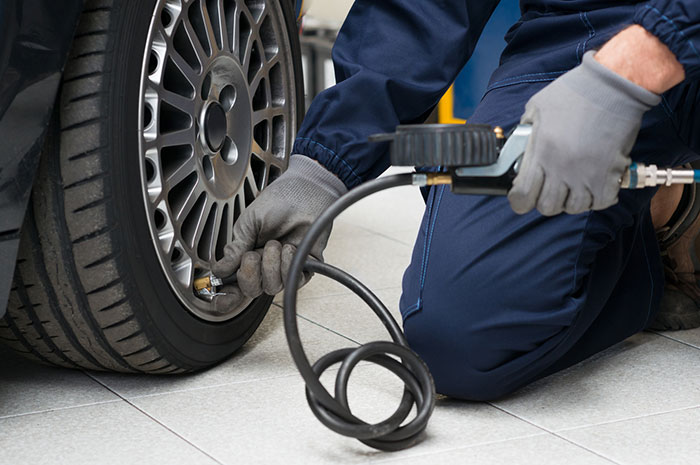
When we think about our cars, we often marvel at the sleek design, the roar of the engine, or the advanced technology that powers them. Yet, there’s one simple element that plays a crucial role in your car’s performance: tyre pressure. The science behind tyre pressure is a fascinating blend of physics and engineering and understanding it can have a significant impact not only your vehicle’s handling but also its overall performance.
The Magic of Air
At first glance, a tyre may seem like a simple rubber covering for your wheel. However, it’s the air inside that transforms it into a dynamic component of your vehicle. The right amount of air pressure is essential for optimal tyre function, ensuring a delicate balance between load-bearing capacity, traction, and comfort.
The Goldilocks Zone
Too much or too little air in your tyres can have adverse effects on your car’s handling and performance. Overinflated tyres can lead to a harsh and bumpy ride, reduced traction, and uneven tyre wear. On the other hand, underinflated tyres create excessive heat, decrease fuel efficiency, and compromise your ability to control the vehicle.
The Physics of Grip and Traction
Footprints on the Road – The area of the tyre that makes contact with the road is called the “tyre footprint.” Maintaining the correct air pressure ensures that this footprint is optimal, maximising the tyre’s grip on the road surface. Proper traction is not only vital for safety but also for achieving peak performance, especially during acceleration, braking, and cornering.
Cornering Confidence – When you take a turn, your tyres experience lateral forces. The right air pressure allows each tyre to maintain its shape during cornering, optimising the contact patch and providing the necessary grip. This means better control and stability as you navigate curves and bends.
Fuel Efficiency and Environmental Impact
Rolling Resistance – Tyre pressure directly influences rolling resistance—the force working against the forward movement of your vehicle. Underinflated tyres increase rolling resistance, requiring more energy and, consequently, more fuel to keep your car moving. Maintaining the correct air pressure promotes fuel efficiency, reducing both your carbon footprint and fuel expenses.
The Role of Temperature
Hot and Cold Truths – Tyre pressure is not a static value; it changes with temperature. As tyres heat up during driving, the air inside expands, leading to an increase in pressure. Monitoring and adjusting air pressure based on temperature fluctuations, especially in extreme weather conditions, is crucial for maintaining optimal performance and safety.
The Importance of Regular Checks
Checking and maintaining proper tyre pressure is a simple yet effective DIY task. Regular inspections ensure that your tyres are within the manufacturer’s recommended pressure range, extending the lifespan of your tyres and enhancing your vehicle’s overall performance. It is recommended that you manually check your tyre pressure every month, especially if your vehicle is not fitted with a tyre pressure monitoring system (TPMS).
The science behind tyre pressure is a delicate dance between air, physics, and engineering. It’s not just about avoiding a flat tyre; it’s about unlocking the full potential of your vehicle. Proper air pressure ensures safety, stability, fuel efficiency, and an overall smoother driving experience. So, the next time you hit the road, remember that the invisible force inside your tyres plays a significant role in shaping your journey. Keep them properly inflated and let the science of tyre pressure drive you towards a safer and more efficient ride.
To ensure your tyres are always properly inflated, you should consider installing a tyre pressure monitoring system (TPMS) from Safe T Tyre. Browse our range online or get in touch with our friendly team to purchase yours today.

